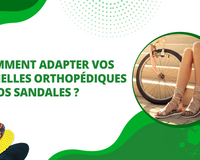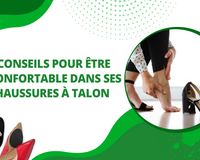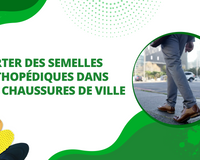
In the first years of a child's life, bebe flatfoot is typical, when the arch of the foot is absent or malformed. As a result, there are no movement problems, as the foot is flexible, does not cause painIt's a physiological foot, and therefore completely normal.
Typically, it is seen in almost 97% of children aged 0 to 2, and gradually diminishes with age, to around 50% at 3, 25% at 6, then from 10 onwards, only a few children still have it.
From then on, it is defined as idiopathic, flexible flatfoot, because although no precise cause is known, it is probably the consequence of the interaction between the many factors that contribute to the formation of the arch of the footand in this case, the use of orthopedic insoles for children is highly recommended.
Flat feet: a natural predisposition

However, the ✅ care is essential in this case to avoid complications such as chronic pain and difficult travel in adulthood.
Since flatfoot is characterized by a collapse of the arch of the foot, it is generally acquired in adults and results from a number of external phenomena. In children, on the other hand, flatfoot is a physiological condition, as mentioned above.
In the most frequent cases, the arch of the foot naturally forms around the age of 5 or 6, and in many children, it ends around the age of 10. That's why, from this age onwards, a podiatric intervention is necessary if all treatments to end children's flatfoot pain have failed.
Common causes of flatfoot in children
In children generally over the age of 10, the main causes of flatfoot are most often due to :
- Valgus knees
- Muscle weakness
- Overweight or obesity
- Ligament instability
- Hereditary diseases
- Etc...
Diagnosis of flatfoot

At what age should a baby be diagnosed with flatfoot?
In children, flatfoot can only be diagnosed from the age of 3. While the diagnosis is being made, the doctor first checks the length of the Achilles tendon to make sure it's long enough, and then places the child on a podoscope to measure the surface of the foot on the ground.
However, it's important to remember that ✅ care is essential in this case to avoid complications such as chronic pain and difficult travel in adulthood.
How to recognize flat feet in children?
Most children with bebe flatfoot don't experience any discomfort but, nevertheless, the most common symptoms of flatfoot in children are as follows:
- Abnormal use of shoes
- Too large a footprint
- deviation from the natural axis of the forefoot and heel
- abnormal displacement of the talus
Treatment of children's flatfoot

How to treat flatfoot in children?
If during the initial check-up the diagnosis of Pronatory Syndrome associated with a flat valgus foot, the doctor may suggest the adoption of a child's flat-foot shoe, commonly available on the market, which has a standard orthopedic insert. These shoes can be fitted with a flat-foot insole to help straighten the child's foot.
But usually, in more severe cases, doctors can prescribe custom-made orthotics, fabricated from footprints by a qualified orthopedic technician. However, the treatment of flat feet in children may also depend essentially on the child's age, and may include :
- From 0 to 4 years : no need to worry, and therefore no need for treatment. No need to worry about baby flatfoot.
- Between 4 and 8 years: flat-foot orthotics and physiotherapy are recommended.
- After age 8 : orthopedic inserts may be prescribed and, as a last resort, surgery may be required
Flat feet in children under four
In children, the arch of the foot most often takes its shape during the first years of growth, and especially before the age of 4. From 0 to 4 years of age, no treatment is required.
However, to encourage the development of the arch, parents can generally encourage their child to walk barefoot on grass or sand, which reduces flat-footedness in babies aged 2. The aim of this repeated walking exercise on the outer edge of the foot and on the toes is to encourage the formation of the medial longitudinal arch. To this can be added the wearing of baby flat-foot shoes with a flat-foot sole.
Activities such as tricycle riding are also beneficial to foot development. However, in the first years of a child's life, a pair of flat-foot orthopedic shoes with good support for the inner edge of the foot is sufficient.
Flat feet in children under the age of eight

When flatfoot is not associated with pain or even functional impairment, it's called idiopathic flatfoot. However, before the age of 8, a child's flatfoot orthotic can be added to the shoe to alleviate potential pain, as the foot evolves very rapidly at this age.
✅However, these orthotics should be checked every 6 months..
In addition, at this age, podiatric exercises such as toe and heel walking, or regular physical activity, are also recommended to accompany the wearing of flat-foot insoles, as they usually help to obtain a fairly hollow arch.
However, if the child suffers from pathological flatfoot, i.e. when associated with a sometimes disabling painflatfoot surgery may be considered if all other treatments, such as the use of valgus flatfoot insoles, have failed. have not worked. However, some doctors recommend special flatfoot operations before the age of 8.
Flatfoot in children after the age of eight
Once a child with flat feet reaches the age of 8 or more, it is advisable to use insoles to overcome the condition.
However, if functional problems and pain persist or appear, a child's flatfoot operation may be necessary.
It should be noted that under no circumstances should a pathological flatfoot be left untreated, as severe complications may arise in adulthood.









